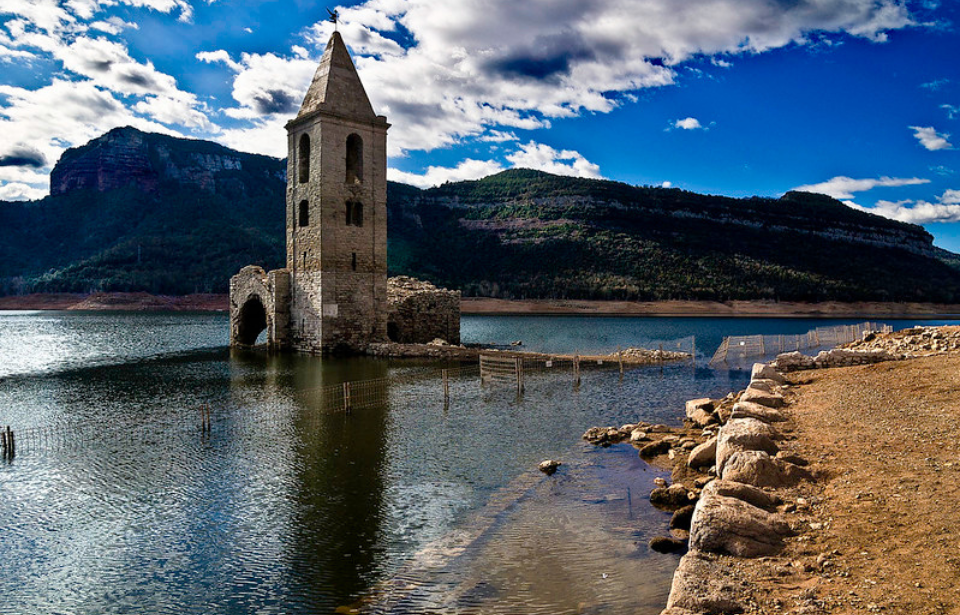Major infrastructure projects are seen as important for the progress and modernization of civilization, and they’re “sold” by the relevant officials as essential to both a population and a nation’s survival. However, they’re usually followed by “little” sacrifices. Often wrapped up in sweet words of propaganda, this can sometimes mean replacing the old way of life with a new reality.
Such realities might include radical changes to the landscape. For example, many dam projects are established to provide hydro-electric power or water reservoirs, but they, sadly, can cause the destruction of ancient villages, towns and historic structures; an inevitable disaster that’s presented as a perfect storm.
In this story, the beauty of an abandoned church bell tower rises from the waters of a man-made lake at Sant Romà de Sau.
A once-thriving community in Spain
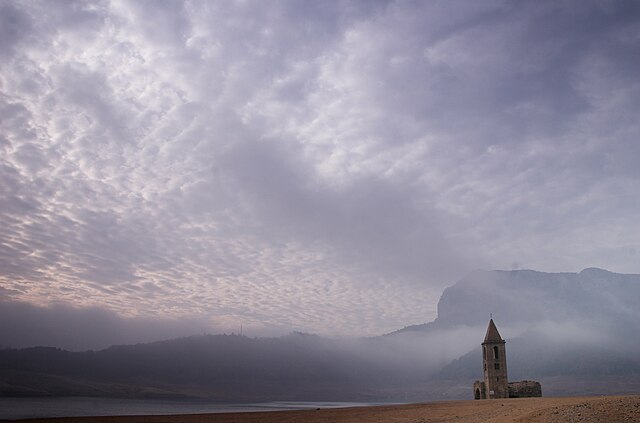
The ancient town of Sant Romà de Sau was once a peaceful and thriving community nestled in the Sau Valley in Catalonia, Spain. Up until the 1960s, it was home to approximately 100 inhabitants, but the Spanish government, under Fransisco Franco, decided to construct a dam on the Ter to create a reservoir, which would slowly drown the whole settlement.
After exploring the Guilleries and its waters for the ideal location, the government selected the Sau Valley.
Construction of a new reservoir
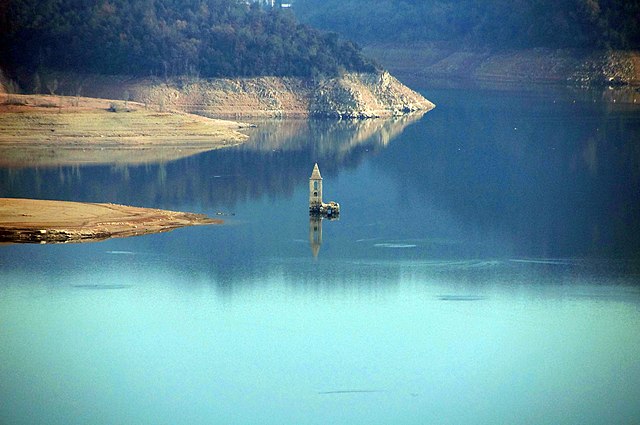
Construction work on the reservoir began in 1941, with the dam reaching completion in 1962. The inhabitants of Sant Romà de Sau were moved to a new town, Vilanova de Sau. They took their precious items and house fittings with them, leaving nothing within the walls of their former residences. They even took the dead out of the graveyards and put them in a new cemetery.
The ghost town, left abandoned, silently awaited the water.
Submerging Sant Romà de Sau
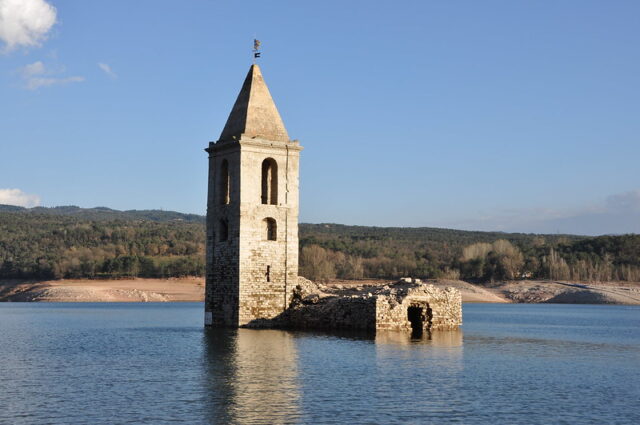
The Sau Valley was completely flooded in 1965 and, officially, the Sau Reservoir was born. Since then, it’s been the main drinking water supply for much of the Catalonia region.
The artificial flood submerged the entire town, except for the top of the square bell tower of the stone church, which stands in 23 meters of water. The lonely belfry became the only visible reminder of the village of Sant Romà de Sau and, in some melancholic way, became its gravestone.
Church at Sant Romà de Sau
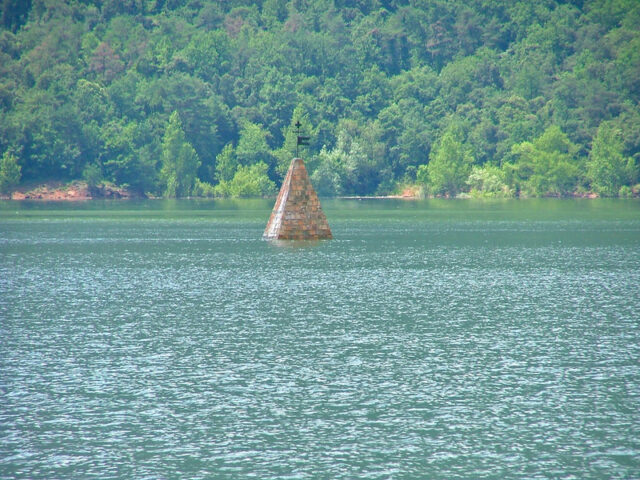
Historic documents indicate the Lombard Romanesque church was erected between 1025-50, on the site of an older religious building. These also show that it was consecrated around 1061-62. In the 15th century, the church was seriously damaged by an earthquake. It was later altered and enlarged, with these modifications easily recognizable on the structure.
Is the entire church ever fully viewable?
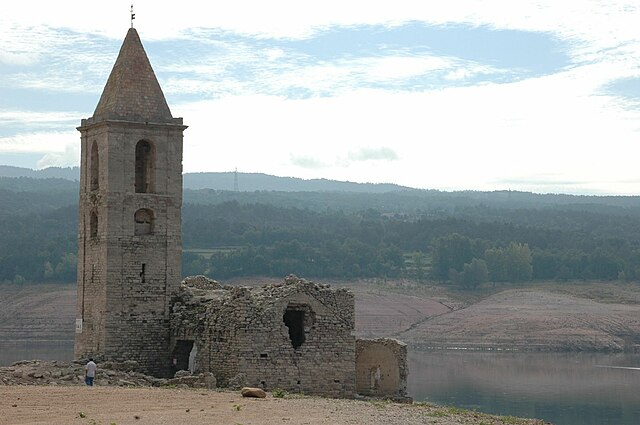
On hot summer days during particularly dry periods, the water level dips, and the entire church at Sant Romà de Sau comes into view. Other parts of the town can be seen, too, like the Romanesque bridge and the foundations of several farmhouses.
More from us: Take a Peek At These Abandoned Islands Around the World
During one extremely dry season, engineers strengthened the church with concrete, with a focus on its foundations. It had already begun to attract tourists and the local authorities wanted to provide a bright future for this historic structure.
